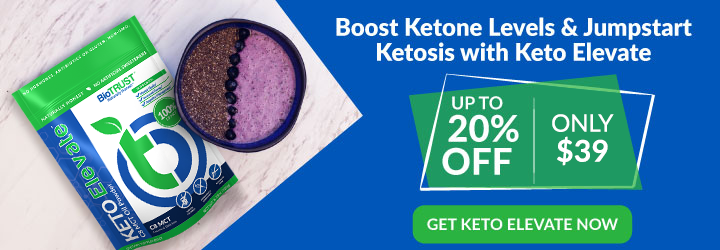What is the Lazy Keto Diet (and will lazy keto work for you)?

Lazy keto, or “dirty keto” as it is known in some circles, is a form of the ketogenic diet where you are consuming higher amounts of fat, moderate amounts of protein, and limiting your carbohydrates; however, you are not necessary tracking these macros as intensely as someone who is doing strict keto does.
There was once a time when folks feared the fat. Everywhere you turned, it was frowned upon to include anything with fat in your diet. During this period of time, you may not have religiously tracked your macronutrients, but you would be mindful to keep your fat grams under a certain amount each day.
With the strict ketogenic diet, the general rule of thumb is to consume 80% of your diet in the form of fat, 15% of your diet in the form of protein, and 5% of your diet in the form of carbohydrates. This is primarily to ensure your body stays in ketosis, and you can reap the full benefits of burning fat for fuel.
With lazy keto, rather than tracking your fat and protein, you solely monitor your carbohydrates to make sure you are not exceeding the limited amount of 5%. Yet you allow yourself to use your best judgement with the other macros, being mindful to consume the majority of your calories in healthy fats.
Rules for Lazy Keto
Some of the simple, yet effective rules for lazy keto include:
- Learn to track net carbs. Look at the number of carbs on the label, and then subtract both the fiber and sugar alcohols for the total net carbs.
- Stay under your carbs with little or no sugar (absolutely no more than 15 grams).
- Don’t believe everything you read or hear from someone else. In other words, do your own research and listen to your own body.
- Don’t base your progress on anyone else’s.
- Meal planning is crucial, especially when it comes to snacks, so you don’t have the urge to grab something you’ll later regret.
- Put fat on everything. Leave no veggie bare and dry. Cook your meats in fat. Add fat to your fat!
- Listen to your body, and make the adjustments to the diet as needed. More than one path can lead to ketosis. Find yours.
- Hydrate!
Soooo…what can you eat?
Lazy Keto Diet Guide
Meats: Unprocessed meats are low carb and keto-friendly, and organic and grass-fed meat are even healthier. Keep in mind keto is a high-fat diet, not high protein, so you don’t need huge amounts of meat. Any extra protein (more than your body needs) is converted to glucose, which makes it more difficult to get into ketosis. A normal amount of meat is enough.
*Lazy Keto Note: Processed meats (e.g., sausage, cold cuts, meatballs, etc.) often contain added carbs. When in doubt, look at the ingredients, and aim for under 5% carbs.
Fish and seafood (especially fatty fish like salmon) is all good, especially wild-caught fish. But avoid any breading, which adds carbs.
Eggs: These are great additions to the keto diet any way you cook them—e.g., boiled, fried in butter, scrambled, or as omelets.
*Lazy Keto Note: Buying organic or pastured eggs might be the healthiest option.
Natural fat, high-fat sauces: On the keto and lazy keto diet, most of your calories come from fat. While much of it comes from meat, fish, eggs, etc., you’ll also cook with plenty of fats like butter or coconut fat. And you’ll add plenty of olive oil to salads, etc. You can also enjoy delicious high-fat sauces including Bearnaise sauce or garlic butter.
Vegetables: Fresh or frozen—either is fine. Low-carb favorites include leafy greens, cauliflower, cabbage, avocado, broccoli, and zucchini. Some folks following keto think of vegetables as a “fat-delivery system.” And of course, vegetables increase the variety, flavor, nutrients, and color in keto meals.
Many people end up eating even more vegetables than before when starting keto, as veggies replace the typical high-carb options like pasta, rice, potatoes, etc.
High-fat dairy: Butter is good, high-fat cheese is fine, and high-fat yogurts can be enjoyed in moderation. Heavy cream is good for cooking and can be used sparingly in your coffee.
However, you’ll want to avoid drinking regular milk because milk sugars add up fast (one glass contains 15 grams of carbs and a cafè latte adds up to 18 grams of carbs). You’ll also want to eliminate low-fat yogurts which are often loaded with added sugars.
Finally, be aware that regularly snacking on cheese when you’re not really hungry is a common mistake that can slow weight loss.
Nuts: These can be consumed in moderation, but be careful when using nuts as snacks, as it’s very easy to eat far more than you need to feel satisfied. (I can personally attest to this). Some nuts like cashews are relatively high carb, so go with macadamia or pecan nuts instead.
Berries: A moderate amount is okay on lazy keto, perhaps with real whipping cream, a popular keto dessert.
Water: This is hands down the #1 option. Have it flat, with ice, or sparkling. Add natural flavorings like sliced cucumbers, lemons, or limes if you like. If you experience headaches or symptoms of “keto flu,“ you may want to add a few shakes of salt to your water.
Coffee: No sugar, of course, but feel free to add a small amount of milk or cream or add butter and coconut oil (i.e., for Bulletproof coffee) for more energy.
*Lazy Keto Note: If you’re finding your weight loss stalling, try cutting back on the cream or fat in your coffee.
Tea: Most teas can remain on the menu—from black to green to herbal to mint. Not surprisingly, leave the sugar out. Are you beginning to sense a theme here with the “don’t add sugar” advice? 😉
Bone broth or collagen: Because it’s so hydrating and nutritious, as well as satisfying, homemade bone broth or a quality collagen powder can be a great beverage to sip on the keto diet. (Add an extra pat of butter if you’re looking for extra energy.)
Lazy Keto vs Strict Keto
Now that you know what to eat, and how lazy keto works, how does this compare to strict keto?
Well, for starters, if the end goal of the ketogenic diet is to get into ketosis so you are burning ketones for fuel and you are able to do so with the lazy keto approach, then why would you bother with the tedious calculations day in and day out?
If you have ample energy throughout the day, are able to go to sleep each evening, wake feeling rested, have relatively low stress or are able to manage the stress you have within reason, and are feeling satisfied without hunger and cravings, then I would say you are doing everything correctly with your meal plan.
For anyone who is just starting out, I may still recommend you begin with a more strict approach until you get your feet wet and find out what it takes to get into ketosis.
The most significant energy source on the ketogenic diet, by far, is healthy fat. This is because the proper amount of fat consumption not only helps satiate hunger, it also helps curb cravings for carbs.
Protein is next in importance because if you don’t eat enough protein, your body starts breaking down your lean muscle mass for fuel, and it can result in damage to your body, your health, and overall performance.
Bottom line, it is imperative to make sure you are getting the right amount of healthy fat and not over- or under-consuming protein first, before you take matters into your own hands.
Remember, lazy keto ignores these essential macros almost entirely, as it focuses mainly on carbs.
As I mentioned, don’t believe everything you read or hear. And that even includes information coming from an expert like me! Do your own research before deciding if lazy keto is right for you. 😉







